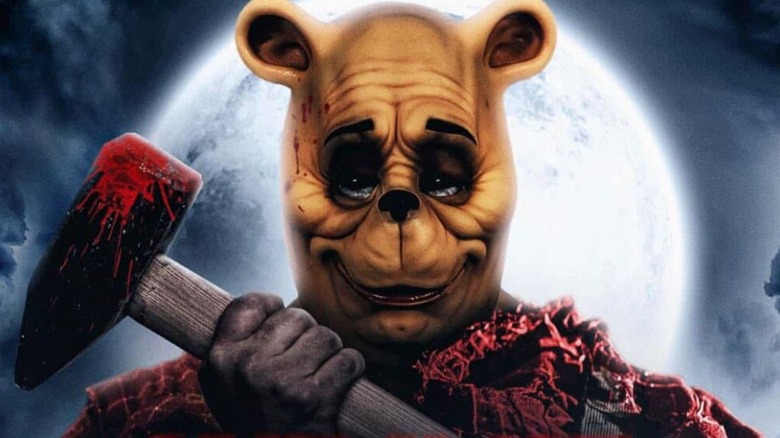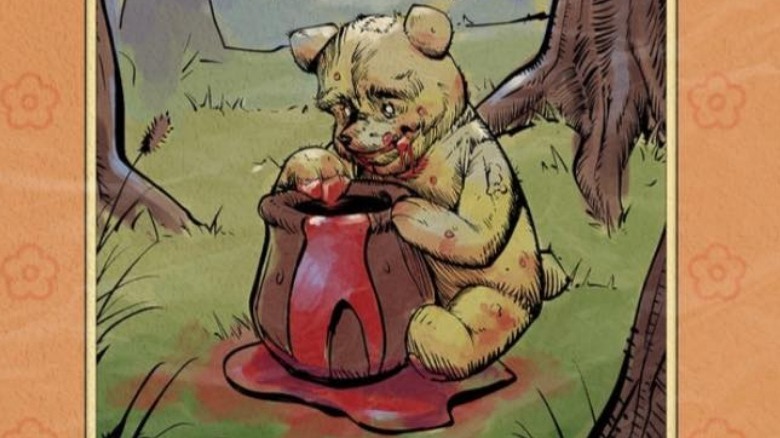Winnie The Pooh: Blood And Honey Director Had To Tiptoe Around Disney Copyrights
"Winnie the Pooh: Blood and Honey" is finally making its way to the big screen after becoming a viral sensation near the end of 2022. Hoping to capitalize on some of the success it had with the unconventional release of "Terrifier 2" last fall, Fathom Events hopes rabid horror fans turn up for the sick and twisted version of the children's story classic. While fans of the horror genre are ready for scares brought on by the silly old bear, the filmmakers behind the slasher film are scared of another entity entirely: Disney.
Disney tends to conjure up warm and fuzzy memories attached to animation and childhood innocence, but it's also a ruthless corporation known for its no-nonsense attitude towards copyright infringement. "Blood and Honey" is towing a line with what they're able to show in terms of the character of Pooh. The 1926 novel "Winnie the Pooh" by A.A. Milne entered the public domain as the movie was being made, and that means the filmmakers were able to use the character freely — as long as they only pulled aspects from that particular book and none of the Disney-owned story elements.
"Winnie the Pooh: Blood and Honey" takes place after Christopher Robin packed up his old playthings and moved away. Upon arriving back home, he finds that Piglet and Pooh have gone feral and are killing everyone they come into contact with. Christopher Robin is taken by the murderous pair as they seek to kill a group of friends inhabiting a nearby cabin. Definitely doesn't sound like a typical Disney movie plot.
Don't expect to see Tigger in this horror adaptation
"Winnie the Pooh: Blood and Honey" director Rhys Frake-Waterfield explained to Yahoo! Entertainment how he could use Pooh Bear, a character that's closely associated with its Disney interpretation, for his gore-filled slasher epic. He said that the 1926 version of Winnie the Pooh is in the public domain, so he could only pull aspects from that specific characterization that is now available for fair use.
He explained where Disney's ownership of certain aspects of the Pooh world came into play, saying, "Other parts like Poohsticks, and Tigger, and Pooh's red shirt — those aren't elements I can use at the moment because they're the copyright of Disney and that would get me in a lot of trouble." He further noted that some of those aspects were in the film's original script, but he cut them to avoid ripping on Disney's intellectual property, which could have put him in a sticky legal situation.
To avoid any further conflict with Disney, Frake-Waterfield also decided not to have Pooh Bear be too chatty like other screen villains. If Winnie the Pooh had any deranged "Oh, Bother" comments that closely resembled The House of Mouse's depiction of the character, the director knew he'd be in hot water. He said, "I took him down the Michael Myers slasher route rather than making him a bit like Chucky, which might be a bit closer to Disney." Most important to Frake-Waterfield was working within the confines of the genre for the film he set out to make, hoping that the film gets under viewers' skin. He said that worked to his benefit as well; "That led me towards a completely opposite end from the Disney version, which is obviously designed to be friendly and cuddly."

